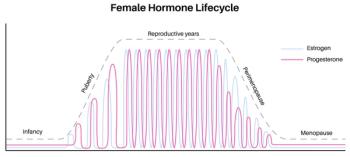
Cannabis Extract Provides LBP Relief Superior to Opioids Over 12 Months in Phase 3 Clinical Trial
Vertanical's VER-01 shows promise in reducing chronic low back pain, outperforming opioids and maintaining relief for over a year.
Biopharmaceutical company Vertanical released findings today from 2 phase 3 clinical trials showing that its investigational
In a placebo-controlled double-blind trial of 820 participants, VER-01 met its primary endpoint, reducing pain scores on the 0–10 numerical rating scale by nearly 2 points after 12 weeks compared with placebo.2 In an open-label extension phase of the trial, pain relief decreased to -2.9 points after 6 months and was sustained through 12 months. The cannabis derivative was particularly effective in participants with neuropathic pain and severe pain, according to the study findings. Participants also reported better sleep and physical function.2
VER-01 vs Opioids
ELEVATE, a separate open-label head-to-head study that enrolled 384 participants with CLBP found VER-01 superior to opioids, with participants 4 times less likely to develop constipation and 3 times less likely to use laxatives.3 As in the study against placebo, response to VER-01 during 6 months was more pronounced among participants with neuropathic and more intense pain. VER-01 was also associated with greater pain relief and improved sleep.3
The investigational therapy was generally well tolerated, according to Vertanical. Most of the adverse events (AEs) reported, including dizziness, fatigue, and nausea, occurred during the initial 3-week titration phase and were transient. The company stated that serious AEs in the VER-01-treated study arm occurred at rates comparable to the placebo-treated arm, and investigators observed no cases of dependence or withdrawal.1-3
"These findings provide powerful evidence that VER-01 could transform how we care for patients with chronic lower back pain, if approved," Charles E. Argoff, MD, professor of neurology at Albany Medical College and past president of the American Academy of Pain Medicine, said in a statement.1 "The results of the phase 3 studies bring hope to millions living with chronic pain that, if approved, VER-01 could deliver effective pain relief while addressing key safety challenges of current therapies."1
Supporting Argoff's view, Roger Knaggs, PharmD, president of the British Pain Society, added: "Patients and physicians have long sought novel treatments for chronic pain. If approved, VER-01 could represent the first new class of chronic pain medicine for a very long time."1
High Burden, Limited Options
Chronic low back pain is the leading cause of disability worldwide, affecting more than 600 million people and projected to rise to over 800 million by 2050.4 Treatments for the persistent condition continue to be limited. Although NSAIDs are widely used, their risks of gastrointestinal and cardiovascular complications restrict eligibility.5 Opioids, while effective in the short term, have well-documented risks of misuse, dependence, and addiction, with misuse rates in chronic pain estimated as high as 29%.6
In the years-long search for alternative analgesics, cannabis-based therapies have drawn increasing research interest. Unlike single-molecule cannabinoid products, VER-01 is a standardized full-spectrum extract from Cannabis sativa DKJ127 L, containing a defined mix of cannabinoids, terpenes, and other bioactive compounds.1 Vertanical reports that its proprietary extraction process preserves this broader phytochemical profile, which may contribute to the therapy’s clinical effects.1
Vertanical has submitted marketing applications for VER-01 in several European countries. A phase 3 trial in the US is expected to begin in early 2026 to support a subsequent filing with the FDA.1 If approved, VER-01 would be the first full-spectrum cannabis extract authorized specifically for CLBP and potentially the first new pharmacologic class in chronic pain management in decades.1
References
VERTANICAL announces positive results from the VER-01 phase 3 program for the treatment of chronic low back pain (CLBP). News release. Vertanical. October 1, 2025. Accessed October 1, 2025. https://www.prnewswire.com/news-releases/vertanical-announces-positive-results-from-the-ver-01-phase-3-program-for-the-treatment-of-chronic-low-back-pain-clbp-302572220.html
Meissner W, Argoff C, Sator S, Schoder V, Karst M. VER-01 shows enhanced gastrointestinal tolerability, superior pain relief, and improved sleep quality compared to opioids in treating chronic low back pain: a randomized phase 3 clinical trial. Pain Ther. Published online on September 30, 2025. doi:10.1007/s40122-025-00773-z
Karst M, Meissner W, Sator S, Keßler J, Schoder V, Häuser W. Full-spectrum extract from Cannabis sativa DKJ127 for chronic back pain: a randomized, placebo-controlled phase 3 study. Nat Med. Published online on September 29, 2025. doi: 10.1038/s41591-025-03977-0
GBD 2021 Low Back Pain Collaborators. Global, regional, and national burden of low back pain, 1990-2020, its attributable risk factors, and projections to 2050: a systematic analysis of the Global Burden of Disease Study 2021. Lancet Rheumatol. 2023;5(6):e316-e329. doi: 10.1016/S2665-9913(23)00098-X
Salvo F, Antoniazzi S, Duong M, et al. Cardiovascular events associated with the long-term use of NSAIDs: a review of randomized controlled trials and observational studies. Expert Opin Drug Saf. 2014;13(5):573-585. doi:10.1517/14740338.2014.907792
Vowles KE, McEntee ML, Julnes PS, Frohe T, Ney JP, van der Goes DN. Rates of opioid misuse, abuse, and addiction in chronic pain: a systematic review and data synthesis. Pain. 2015;156(4):569-576. doi:10.1097/01.j.pain.0000460357.01998.f1
Newsletter
Enhance your clinical practice with the Patient Care newsletter, offering the latest evidence-based guidelines, diagnostic insights, and treatment strategies for primary care physicians.



























































































































































































































































































